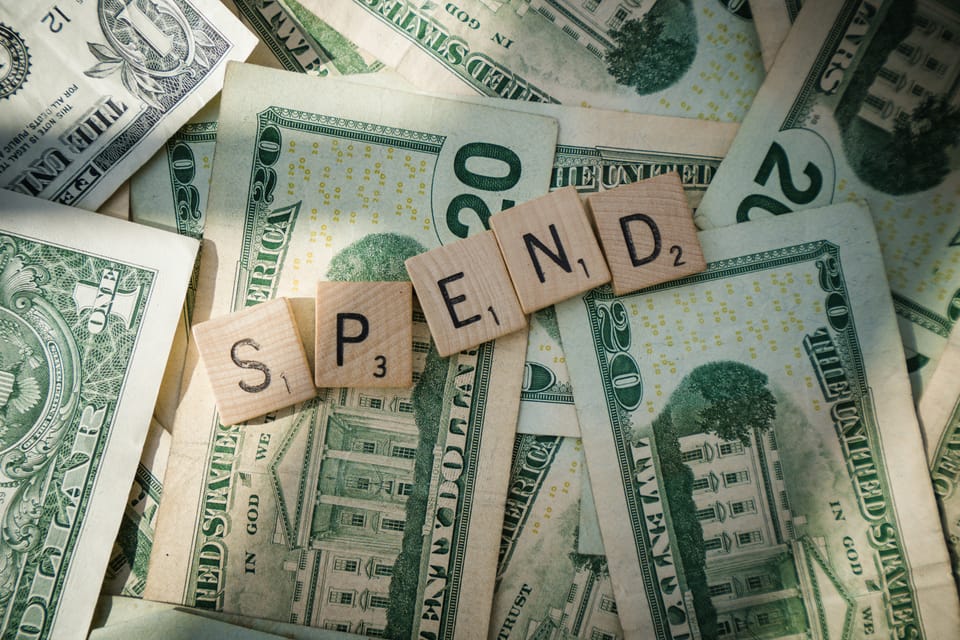Line-Item Budgeting: Is This Big-Picture Budget Right for You?
Curious where your money really goes? Line-item budgeting offers a clear, category-based view of your spending—ideal for spotting high-cost areas and improving financial habits. Learn how it works, who it's best for, and download a free Google Sheets template to get started.

When it comes to managing money, there are countless budgeting styles out there—some are strict, some are flexible, and others are built for a bird’s-eye view of your finances. One often-overlooked method is line-item budgeting, a tool used widely in business and government finance that can also work surprisingly well for households.
But is it the right approach for your financial goals? Let’s explore what line-item budgeting is, how it works, and who it’s best suited for.
What Is Line-Item Budgeting?
Line-item budgeting organizes your finances by grouping similar types of expenses into categories—called line items. This allows you to see not just what you're spending, but where you're spending the most.
According to Business Dictionary:
“A budget in which the individual financial statement items are grouped by cost centers or departments. It shows the comparison between the financial data for the past accounting or budgeting period and estimated figures for the current or a future period.”
In simpler terms, it’s a way to break down your budget into meaningful chunks. For instance, all pet-related expenses—food, grooming, vet visits—can be grouped under one “Pets” category. You’ll get a total view of how much you’re spending on that area of your life, rather than seeing each transaction in isolation.
Why Use Line-Item Budgeting?
Line-item budgeting is all about visibility. If you’re trying to understand which parts of your lifestyle consume the most money, this method is incredibly useful. It’s not about tracking every penny—it’s about tracking patterns.
This makes it ideal for:
- Experienced budgeters who want to optimize spending.
- Families with stable income looking to streamline costs.
- Small businesses or side hustles monitoring department or category-level spending.
How to Set Up a Line-Item Budget
- List All Income Sources
Start by recording every stream of income—salaries, freelance work, rental income, etc. - Create Expense Categories (Line Items)
Group your spending into categories like:- Housing (rent/mortgage, utilities)
- Transportation (car, gas, insurance)
- Health (insurance, prescriptions)
- Food (groceries, dining out)
- Pets (food, grooming, vet)
- Savings & Debt
- Entertainment
- Enter Planned and Actual Amounts
Estimate how much you plan to spend in each category, and then track what you actually spend. - Review Regularly
Adjust your estimates based on real-world data to fine-tune your financial habits.
Pros of Line-Item Budgeting
- Big-picture clarity: See which categories eat up the most money.
- Easy to implement: No complex rules—just categorize and track.
- Helpful for long-term trends: Great for analyzing past spending and making forecasts.
- Works well for comparing periods: Useful for quarterly or yearly comparisons.
Cons to Consider
- ❌ Not ideal for debt payoff or aggressive saving: It doesn’t help you assign a job to every dollar.
- ❌ Lacks detail: If you want to track every cent, this isn’t the tool for you.
- ❌ Not goal-oriented: It’s more about analysis than action.
- ❌ Can feel too general for beginners: Especially if you’re just learning to budget, the high-level view might miss critical details.
Line-Item vs. Other Budgeting Styles
| Budget Style | Focus | Best For |
|---|---|---|
| Line-Item Budgeting | Big-picture category spending | Experienced users, businesses |
| Zero-Sum Budgeting | Assigning every dollar a role | Debt payoff, strict money control |
| Envelope Budgeting | Category-specific spending limits | Cash-based spenders, budgeting novices |
| 50/30/20 Budgeting | Needs, wants, savings balance | Simplicity, first-time budgeters |
If your goal is to pay off debt or build savings rapidly, line-item budgeting may not be the most efficient tool. In that case, consider switching to a zero-sum budget that allocates every dollar to a specific task—saving, spending, or debt repayment.
So, Is Line-Item Budgeting Right for You?
Line-item budgeting is excellent if:
- You want to see where your money goes in categories.
- You already have control over your finances and are fine-tuning.
- You manage a business or side hustle and need an organized view.
But it might not be the best fit if:
- You're just starting out and need tighter control.
- You're trying to eliminate debt or build up emergency savings fast.
- You need a budgeting style that’s goal-driven and hyper-detailed.
Final Thoughts
Line-item budgeting won’t track every penny, but it will show you the shape of your spending. It’s a powerful tool for those who understand their financial picture and want to spot problem areas—or just get a clearer view of their monthly habits.
If that sounds like you, give it a try using the free Excel template above. And if not, don’t worry—there are plenty of other budgeting methods out there better suited to your goals.
Need help picking a budgeting style? Drop your questions in the comments or reach out—we’d love to help you get started on your financial journey.



